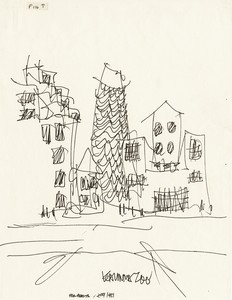
Frank Gehry: Fish Lamps
Paul Goldberger traces the history of the fish form throughout Frank Gehry’s career.
November 17, 2014
In the autumn of 2014, it appeared as if a ship had sailed into the Bois de Boulogne in Paris. Well, it was not a ship so much as an architectural tour de force: a vast building made with more than 3,200 panels of glass and 15,000 tons of steel. This striking building was the long-awaited premiere of Bernard Arnault’s Fondation Louis Vuitton and the latest triumph for its architect, Frank Gehry. Here the celebrated architect discusses the project with Gagosian’s Derek Blasberg.
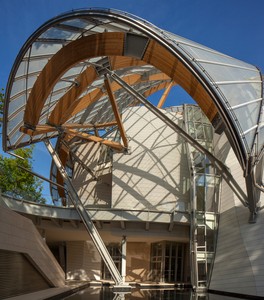
Fondation Louis Vuitton, Paris
Fondation Louis Vuitton, Paris
Derek Blasberg First, let’s talk about Paris. Do you have any vivid or formative memories about Paris or the Bois de Boulogne?
Frank Gehry I’ve loved Paris since I lived there in 1960. The first time that I visited the garden with Bernard Arnault, I could feel the history of the place; it made me remember Proust, who writes about it in his books. I actually started to cry.
DB It seems as though this building must have been an emotional project, and ultimately it is a triumph. There are so many iconic structures already in Paris. Was that a daunting observation, or was it exciting to anticipate that this structure might join that pantheon?
FG I don’t think about it that way. Of course I have great respect and admiration for the buildings of Paris, and I know them well from my time living and working there—in fact, I studied them. But this project is in a setting that is not immediately adjacent to those buildings. It had to respect the heritage of the older buildings, but it also had to be something different.
DBWhen did you start working on its design? What informed your decisions?
FGWhen I first met Bernard Arnault in 2001, he told me about his plan to build a place in Paris that would encourage creativity and make contemporary art accessible to everybody. He brought me to the Jardin d’Acclimatation. We discussed creating an ephemeral building in the tradition of the nineteenth-century garden pavilions. The question was how to accommodate the functions of the building and still have a building that would seem open and transparent. That’s why the building is made of two layers—the glass sails on the outer layer and the “icebergs,” which house the galleries.
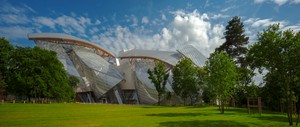
Fondation Louis Vuitton, Paris
DBI know you are a fan of water—and fish, which you’ve used as inspiration for some of your artworks and earlier buildings—so does it put a smile on your face that you’ve put a big ship in the middle of Paris?
FGI wanted to create a regatta through the park—not just one ship, but many! The big panels of curved glass that form the facade, what we call “the sails,” help bring the park into the building, and the building into the park. From the outside, you see the sky, the trees, and the water reflected in the sails. When you’re inside, you see out to the surroundings and feel connected to the garden.
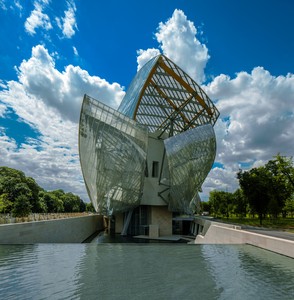
Fondation Louis Vuitton, Paris
DBI was told that you designed this building from the inside out. Unlike other spaces, when you design galleries, you need to hang works on walls, not glass. What other factors dictated the way this project came together?
FG When you design a museum, you ordinarily start with a philosophy of how the galleries ought to work, and then you decide where to put them in relation to each other and the building as a whole. This was a different problem. This is a building in the Bois de Boulogne. If it didn’t have the glass, we would have been required to create a lower and more blocklike structure. But we wanted the glass, to make the Fondation reminiscent of a garden building. That decision enabled us to add some height to the building, which gave us more space. The height also allowed us to create exterior terraces that connect the Jardin to the building. Visitors can walk up the exterior of the building to the topmost terrace, which has extraordinary views of Paris.
DBThe building is so impressive. How has it been to work with Fondation Louis Vuitton on the project?
FGThis was really a collaboration with Bernard Arnault. He took part in every round of study and revision. His input was critical to the process. This would have been a very different building if it had been done for anyone other than Bernard. He was fantastic to work with as was his team.
Photos: © Todd Eberle for Fondation Louis Vuitton, 2014
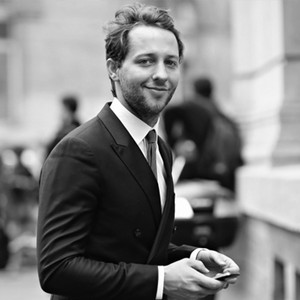
Derek Blasberg is a writer, fashion editor, and New York Times best-selling author. He has been with Gagosian since 2014, and is currently the executive editor of Gagosian Quarterly.

Paul Goldberger traces the history of the fish form throughout Frank Gehry’s career.

Frank Gehry speaks to Jean-Louis Cohen about the early years of his practice, including his work with LA artists, and the role of sketching in his design process. The first volume of the catalogue raisonné of the architect’s drawings, edited by Cohen, was published by Cahiers d’Art earlier this year.

Inspired by a visit to the Fondation Louis Vuitton’s exhibition Charlotte Perriand: Inventing a New World, William Middleton explores the life of this modernist pioneer and her impact on the worlds of design, art, and architecture.
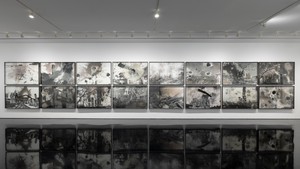
Sébastien Delot is director of conservation and collections at the Musée national Picasso–Paris and the organizer of the first retrospective to focus on Anselm Kiefer’s use of photography, which was held at Lille Métropole Musée d’art moderne, d’art contemporain et d’art brut (Musée LaM) in Villeneuve-d’Ascq, France. He recently sat down with Gagosian director of photography Joshua Chuang to discuss the exhibition Anselm Kiefer: Punctum at Gagosian, New York. Their conversation touched on Kiefer’s exploration of photography’s materials, processes, and expressive potentials, and on the alchemy of his art.
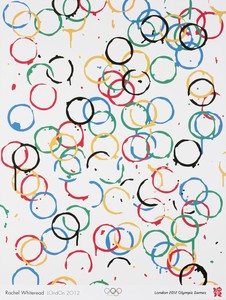
The Olympic and Paralympic Games arrive in Paris on July 26. Ahead of this momentous occasion, Yasmin Meichtry, associate director at the Olympic Foundation for Culture and Heritage, Lausanne, Switzerland, meets with Gagosian senior director Serena Cattaneo Adorno to discuss the Olympic Games’ long engagement with artists and culture, including the Olympic Museum, commissions, and the collaborative two-part exhibition, The Art of the Olympics, being staged this summer at Gagosian, Paris.

David Cronenberg’s film The Shrouds made its debut at the 77th edition of the Cannes Film Festival in France. Film writer Miriam Bale reports on the motifs and questions that make up this latest addition to the auteur’s singular body of work.

On the occasion of Art Basel 2024, creative agency Villa Nomad joins forces with Ghetto Gastro, the Bronx-born culinary collective by Jon Gray, Pierre Serrao, and Lester Walker, to stage the interdisciplinary pop-up BRONX BODEGA Basel. The initiative brings together food, art, design, and a series of live events at the Novartis Campus, Basel, during the course of the fair. Here, Jon Gray from Ghetto Gastro and Sarah Quan from Villa Nomad tell the Quarterly’s Wyatt Allgeier about the project.
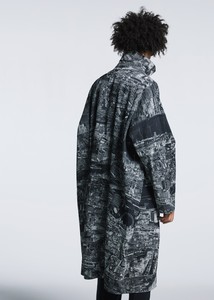
Founded in 1998 by Issey Miyake, A-POC (“A Piece of Cloth”) set out to bring the development and production of fabric and garments into the future. Over the subsequent decades, A-POC has worked at the forefront of technology to realize its goals, and under the leadership of Yoshiyuki Miyamae—who has been with Miyake Design Studio since 2001—A-POC ABLE has engaged in a dynamic series of collaborations with artists, architects, craftspeople, and new technologies to rethink how clothing is designed and made. On the occasion of the line being made available in the United States for the first time, the Quarterly’s Wyatt Allgeier visited the brand’s flagship in New York to speak with Yoshiyuki about the A-POC process, as well as the latest collaboration with the artist Sohei Nishino.
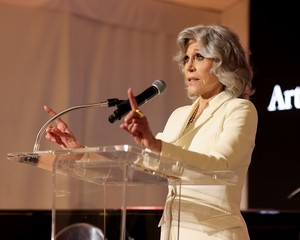
Art for a Safe and Healthy California is a benefit exhibition and auction jointly presented by Jane Fonda, Gagosian, and Christie’s to support the Campaign for a Safe and Healthy California. Here, Fonda speaks with Gagosian Quarterly’s Gillian Jakab about bridging culture and activism, the stakes and goals of the campaign, and the artworks featured in the exhibition.
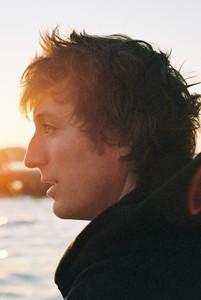
An interview with Marcantonio Brandolini d’Adda, artist, designer, and CEO and art director of the Venice-based glassware company Laguna~B.

In celebration of the life and work of Frank Stella, the Quarterly shares the artist’s last interview from our Summer 2024 issue. Stella spoke with art historian Megan Kincaid about friendship, formalism, and physicality.

Multi-instrumentalist, singer, songwriter, and composer Lucinda Chua meets with writer Dhruva Balram to reflect on the response to her debut album YIAN (2023).